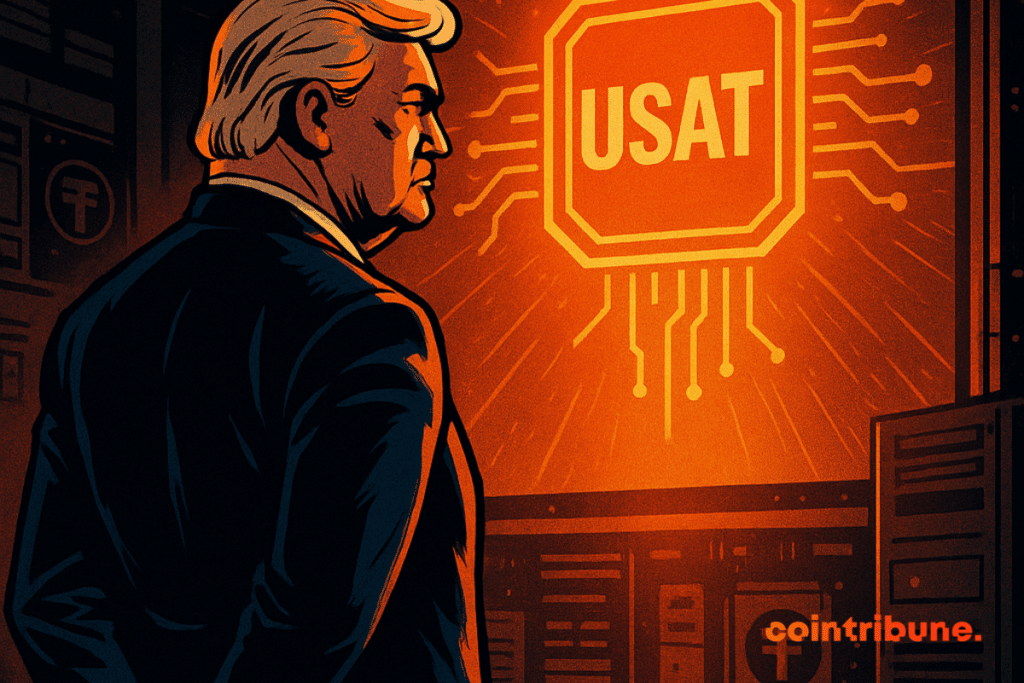Tether Makes Power Move: Trump’s Ex-Advisor Bo Hines to Spearhead Revolutionary New Stablecoin
Tether just dropped a political bombshell that's shaking up crypto circles—hiring former Trump advisor Bo Hines to lead their latest stablecoin initiative.
The Political Crypto Crossroads
Bringing Washington insiders into crypto leadership signals Tether's aggressive push for regulatory influence. Hines' political connections could prove invaluable as stablecoins face increasing scrutiny from lawmakers.
Stablecoin Wars Heat Up
This hiring spree isn't just about credentials—it's about positioning. With competitors circling, Tether's playing the political long game while others focus on technical specs. Because in finance, sometimes who you know matters more than what you know.
Tether's betting that political savvy might be the ultimate stablecoin feature—though traditional bankers would probably call it 'regulatory arbitrage' with a cynical smirk.

In brief
- Tether launches USAT, a dollar-backed stablecoin compliant with new American rules.
- Former White House advisor Bo Hines takes the lead of the strategic project.
- USAT establishes itself as a monetary power tool in a global stablecoin rivalry.
A crypto stablecoin designed for monetary power.
Tether has not just added a new variant to its range. With USAT, it is a real financial tool serving American power. Compliant with the GENIUS Act project and backed by Tether’s Hadron platform, USAT aims to meet regulatory expectations while strengthening its reserves’ solidity.
Paolo Ardoino, CEO of Tether, highlights that the company is among the main holders of U.S. Treasury bonds. A statement heavy with meaning: more than a stablecoin, USAT embodies a relay of the digital domination of the dollar. In a market already exceeding 270 billion dollars, every MOVE counts.
By choosing this direction, Tether puts forward a strategy where technological innovation and monetary stability come together to shape the foundations of tomorrow’s financial infrastructures.
Bo Hines, the political profile behind the innovation
Bo Hines’s arrival at the head of USAT is no accident. Former White House crypto advisor, he left his position in August to join the private sector, just as Washington was intensifying its discourse on American competitiveness in digital finance.
His role within the government gives him rare expertise: he knows the political levers and strategic issues surrounding stablecoins. In a context where the U.S. Treasury views these tokens as a tool to expand the dollar’s hegemony, Hines brings legitimacy and essential political know-how.
For Tether, this choice is doubly symbolic: it is not only about complying with the rules but also being recognized by Washington decision-makers.
Stablecoins, the new scene of global rivalry
The rise of stablecoins goes far beyond the crypto sphere. Hong Kong already attracts major banks with its favorable regulation towards yuan-backed tokens. China uses this lever to strengthen its currency in digital form. As for Russia, it accuses the U.S. of exploiting stablecoins to manipulate their debt.
In this context, USAT becomes more than a financial product: it establishes itself as an instrument of geopolitical influence. For the TRUMP administration, stablecoins are now a strategic pillar, and the arrival of a profile like Bo Hines confirms this direction.
Thus, Tether does not just innovate. With USAT, the company inscribes its action in a logic of monetary power and sovereignty. And at a time when competition intensifies, the company could also consider diversifying its initiatives, notably by exploring backing with safe-haven assets like gold. This combination of digital dollar and tangible value WOULD further strengthen its position in the battle for global economic leadership.
Maximize your Cointribune experience with our "Read to Earn" program! For every article you read, earn points and access exclusive rewards. Sign up now and start earning benefits.

